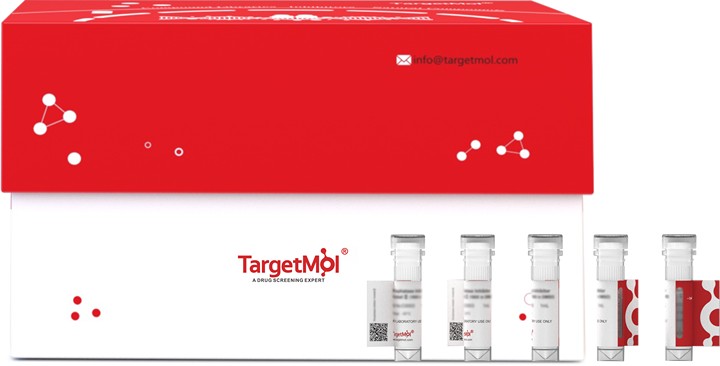- Remove All
 Your shopping cart is currently empty
Your shopping cart is currently empty
Shopping Cart
Mindin Protein, Human, Recombinant (His)
Catalog No. TMPJ-00467
Spondin-2, also referred to as mindin, belongs to the F-spondin family of secreted extracellular matrix proteins. Spondins are characterised by the presence of F-spondin domains 1 and 2 (FS1 and FS2) at the N-terminus and a thrombospondin-type 1 repeat (TSR1) domain at the C-terminus. Spondin-2 functions as a pattern-recognition molecule for bacterial and viral pathogens and as an integrin ligand for inflammatory cell recruitment and T cell priming. In addition to its roles in promoting neuron outgrowth and inhibiting both cancer and angiogenesis, Spondin-2 plays an important role in the initiation of the immune response and is involved in inflammatory processes.

Mindin Protein, Human, Recombinant (His)
Catalog No. TMPJ-00467
Spondin-2, also referred to as mindin, belongs to the F-spondin family of secreted extracellular matrix proteins. Spondins are characterised by the presence of F-spondin domains 1 and 2 (FS1 and FS2) at the N-terminus and a thrombospondin-type 1 repeat (TSR1) domain at the C-terminus. Spondin-2 functions as a pattern-recognition molecule for bacterial and viral pathogens and as an integrin ligand for inflammatory cell recruitment and T cell priming. In addition to its roles in promoting neuron outgrowth and inhibiting both cancer and angiogenesis, Spondin-2 plays an important role in the initiation of the immune response and is involved in inflammatory processes.
| Pack Size | Price | Availability | Quantity |
|---|---|---|---|
| 10 μg | $91 | 7-10 days | |
| 50 μg | $222 | 7-10 days | |
| 500 μg | $1,570 | 7-10 days | |
| 1 mg | $2,230 | 7-10 days |
Bulk & Custom
Add to Cart
Resource Download
Product Information
| Biological Activity | Activity has not been tested. It is theoretically active, but we cannot guarantee it. If you require protein activity, we recommend choosing the eukaryotic expression version first. |
| Description | Spondin-2, also referred to as mindin, belongs to the F-spondin family of secreted extracellular matrix proteins. Spondins are characterised by the presence of F-spondin domains 1 and 2 (FS1 and FS2) at the N-terminus and a thrombospondin-type 1 repeat (TSR1) domain at the C-terminus. Spondin-2 functions as a pattern-recognition molecule for bacterial and viral pathogens and as an integrin ligand for inflammatory cell recruitment and T cell priming. In addition to its roles in promoting neuron outgrowth and inhibiting both cancer and angiogenesis, Spondin-2 plays an important role in the initiation of the immune response and is involved in inflammatory processes. |
| Species | Human |
| Expression System | HEK293 Cells |
| Tag | C-6xHis |
| Accession Number | AAH02707.1 |
| Synonyms | Spondin-2,SPON2,Mindin,DIL-1,Differentially expressed in cancerous and non-cancerous lung cells 1 |
| Amino Acid | Gln27-Val331 |
| Construction | Gln27-Val331 |
| Protein Purity | Greater than 95% as determined by reducing SDS-PAGE. (QC verified) |
| Molecular Weight | 38-42 KDa (reducing condition) |
| Endotoxin | < 0.1 ng/µg (1 EU/µg) as determined by LAL test. |
| Formulation | Lyophilized from a solution filtered through a 0.22 μm filter, containing 20 mM PB, 150 mM NaCl, 1 mM EDTA, pH 7.4. |
| Reconstitution | Reconstitute the lyophilized protein in distilled water. The product concentration should not be less than 100 μg/ml. Before opening, centrifuge the tube to collect powder at the bottom. After adding the reconstitution buffer, avoid vortexing or pipetting for mixing. |
| Stability & Storage | Lyophilized powders can be stably stored for over 12 months, while liquid products can be stored for 6-12 months at -80°C. For reconstituted protein solutions, the solution can be stored at -20°C to -80°C for at least 3 months. Please avoid multiple freeze-thaw cycles and store products in aliquots. |
| Shipping | In general, Lyophilized powders are shipping with blue ice. Solutions are shipping with dry ice. |
| Research Background | Spondin-2, also referred to as mindin, belongs to the F-spondin family of secreted extracellular matrix proteins. Spondins are characterised by the presence of F-spondin domains 1 and 2 (FS1 and FS2) at the N-terminus and a thrombospondin-type 1 repeat (TSR1) domain at the C-terminus. Spondin-2 functions as a pattern-recognition molecule for bacterial and viral pathogens and as an integrin ligand for inflammatory cell recruitment and T cell priming. In addition to its roles in promoting neuron outgrowth and inhibiting both cancer and angiogenesis, Spondin-2 plays an important role in the initiation of the immune response and is involved in inflammatory processes. |
Dose Conversion
You can also refer to dose conversion for different animals. More
Calculator
Tech Support
Please read the User Guide of Recombinant Proteins for more specific information.

Copyright © 2015-2025 TargetMol Chemicals Inc. All Rights Reserved.


